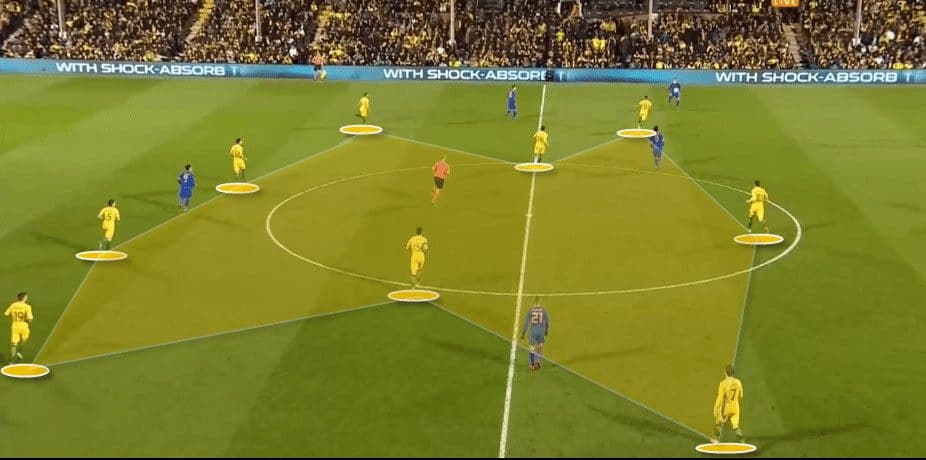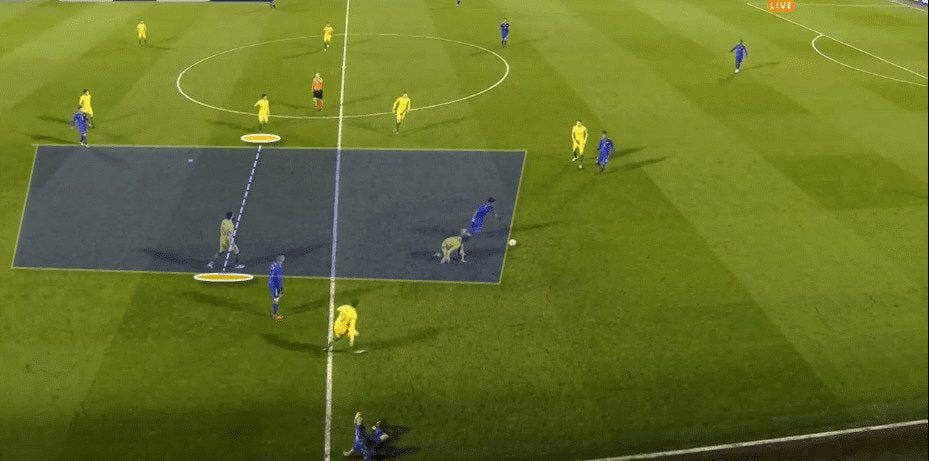The preparation for the World Cup this summer in Russia has been anything but straightforward for Australia, the last side to qualify for the tournament they then had their coach Ange Postecoglu stood down immediately after securing qualification. Since then the coaching situation has been made anything but clear. The appointment of experienced Dutchman Bert Van Marwijk for the tournament was followed by the announcement of the Australian Graham Arnold as the permanent coach for after the tournament. Essentially the replacement for Van Marwijk was announced before the Dutchman had even named his first squad.
To date Australia have played two matches under Van Marwijk, a humbling 4-1 defeat away to Norway followed by a 0-0 draw away to Colombia. These results have served to further dampen expectations and enthusiasm of the Australian public ahead of the tournament. We have also see a relatively radical change in tactical structure with the expansive 3-4-2-1 of Postecoglu being replaced by a more structured 4-2-3-1.
With the squad at their disposal Australia promise to be functional rather than free flowing. Indeed getting through a group stage containing France, Denmark and Peru may be a step too far for them this summer.
Australia Squad
Coach – Bert Van Marwijk
If nothing else the Dutchman at least offers experience and a safe pair of hands going in to the World Cup. He had previously managed club sides of the calibre of Feyenoord, Borussia Dortmund and Hamburg SV as well as holding national team jobs for his native Holland as well as Saudi Arabia, indeed Van Marwijk was the coach of the Saudi’s as they qualified for this tournament before leaving due to a contract dispute.
A largely pragmatic coach we should see Australia favour a highly structured tactical approach with players assigned set roles and responsibilities with little in the way of freedom to play put with these parameters even in the final third. In truth though a more structured and defined approach may well suit the players in the Australia squad with genuine star quality at something of a premium.
Expect the attacking phase to flow through the Celtic midfielder Tom Rogic who has a genuine creative spark. Flanked by the pace of Matthew Leckie and Robbie Kruse this will be the best chance that Australia have to put their opponents on to the back foot.
(At the time of writing the final squad has yet to be named)
Goalkeepers
Mat Ryan, Brad Jones, Danny Vukovic
Defenders
Matthew Jurman, Mark Milligan, Josh Risdon, Trent Sainsbury, Bailey Wright, Aziz Behcic, Milos Degenek
Midfielders
Jackson Irvine, Mile Jedinak, Massimo Luongo, Aaron Mooy, Tom Rogic, James Troisi
Forwards
Tim Cahill, Matthew Leckie, Tomi Juric, Jamie MacLaren, Robbie Kruse, Andrew Nabbout.
Tactics

Normally for the purposes of writing these previews I would watch at least five of the teams matches in qualification in order to get a sense of their tactical framework. With the appointment of Van Marwijk in June of this year however we have a much smaller sample size to work from.
Above I have highlighted the structured approach from Australia with a compact and organised back four with two central midfielders screening ahead of them and then the three more advanced midfielders ahead of that. The horizontal lines in this system are limited suggesting that Australia will favour a passive defensive block before playing direct from back to front when entering their attacking phase.

One of the issues that Australia may have going in to this World Cup will be the problems faced when a player breaks with their defensive positioning. Mile Jedinak is a key player for the Socceroos in midfield and he will be given the bulk of the responsibility in terms of organising the midfield block in the defensive phase. He is also however a very active player in terms of his movement and his work rate when closing down opponents. Here you can see that Colombia are attacking in the wide area and Jedinak has moved over to support the press.
In doing so he immediately stretches the connection between himself and his fellow central midfielder. This gives the opposition the opportunity to play in that gap or even behind the gap where a large space has been created that could give the opponent the opportunity to play from an advanced platform and threaten the final third.
In the attacking phase much will depend on the ability of Tom Rogic to find pockets of space in and around the final third of the field in which he can link the play. Do not be surprised to see the first pass from the Australians in transition to be a long diagonal ball or a direct pass down the line in to the wide areas. It is from here that they will look to turn the defenders of the opposition and create attacking opportunities.
Key Player
Mile Jedinak
The Aston Villa midfielder will be a key player in the centre of the midfield for Australia in this tournament. While not the most glamorous or creative of players Jedinak is a player who very much leads by example with his work rate and defensive tenacity infecting those around him.
He will organise and manage the key midfield block for the Australians looking to ensure that passing lanes in the centre of the field are negated and the opposition are forced to play out in wide areas.
Young Player to Watch
Tom Rogic
In a squad that is relatively experienced the 25 year old Rogic is perhaps the closest that we come to a young player with the ability to impact the game.
Coming off the back of what was perhaps his best season to date as a professional the attacking midfielder looks to have taken large steps forward under the coaching of Brendan Rodgers at Celtic. Capable of playing in the midfield line or advanced in behind the striker Rogic possesses a seemingly innate sense of space and is capable of picking up the ball in dangerous areas and running at the heart of the opposition defence.
He also carries a genuine goal threat going forwards, something that Australia may well find in short supply through the rest of the squad.
Wildcard
Tim Cahill
At 38 years of age this will surely be the last time that we see the former Everton man on the world’s biggest stage. The final remaining member of the golden generation that performed so well in previous tournaments there will be a sense of expectation from the Australian public whenever Cahill comes off the bench.
Previously more of a midfielder expect now to see Cahill come in to matches in the second half as a forward of second striker with his fearsome ability in the air adding an extra dimension to the Australian attack.
Why not check out our other tactical previews already on the site with Iran, Morocco and Portugal having been covered in recent days.






Comments